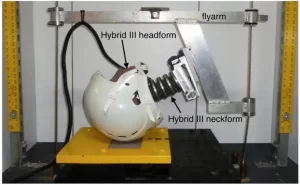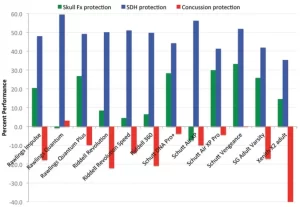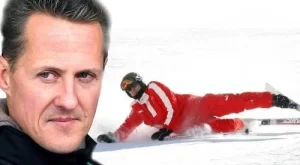Dr. Lloyd’s research article “Brain Injury in Sports”, co-authored with Dr. Frank Conidi has been published in the Journal of Neurosurgery.
Please email me at DrJohnLloyd@Tampabay.RR.com if you would like to receive a full copy of the published article.
Abstract
BACKGROUND
Helmets are used for sports, military, and transportation to protect against impact forces and associated injuries. The common belief among end users is that the helmet protects the whole head, including the brain. However, current consensus among biomechanists and sports neurologists indicates that helmets do not provide significant protection against concussion and brain injuries. In this paper the authors present existing scientific evidence on the mechanisms underlying traumatic head and brain injuries, along with a biomechanical evaluation of 21 current and retired football helmets.
METHODS
The National Operating Committee on Standards for Athletic Equipment (NOCSAE) standard test apparatus was modified and validated for impact testing of protective headwear to include the measurement of both linear and angular kinematics. From a drop height of 2.0 m onto a flat steel anvil, each football helmet was impacted 5 times in the occipital area.
RESULTS
Skull fracture risk was determined for each of the current varsity football helmets by calculating the percentage reduction in linear acceleration relative to a 140-g skull fracture threshold. Risk of subdural hematoma was determined by calculating the percentage reduction in angular acceleration relative to the bridging vein failure threshold, computed as a function of impact duration. Ranking the helmets according to their performance under these criteria, the authors determined that the Schutt Vengeance performed the best overall
CONCLUSIONS
The study findings demonstrated that not all football helmets provide equal or adequate protection against either focal head injuries or traumatic brain injuries. In fact, some of the most popular helmets on the field ranked among the worst. While protection is improving, none of the current or retired varsity football helmets can provide absolute protection against brain injuries, including concussions and subdural hematomas. To maximize protection against head and brain injuries for football players of all ages, the authors propose thresholds for all sports helmets based on a peak linear acceleration no greater than 90 g and a peak angular acceleration not exceeding 1700 rad/sec2.
Please call Dr. Lloyd at 813-624-8986 or email DrJohnLloyd@Tampabay.RR.com if you would like to receive a full copy of the published article “Brain Injury in Sports”

